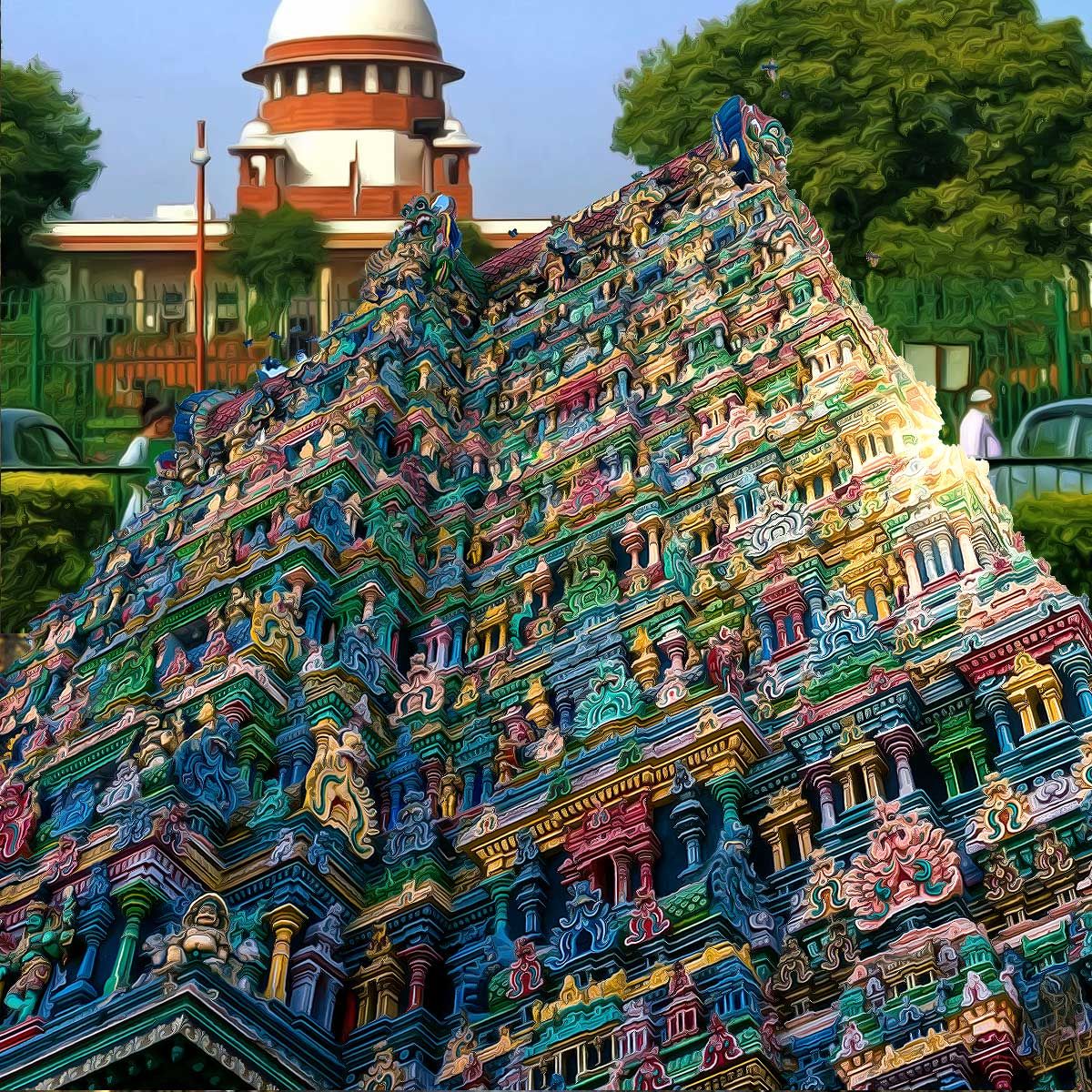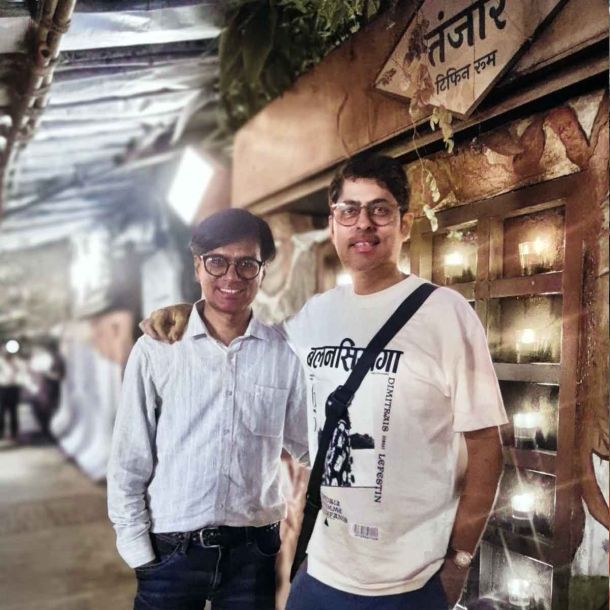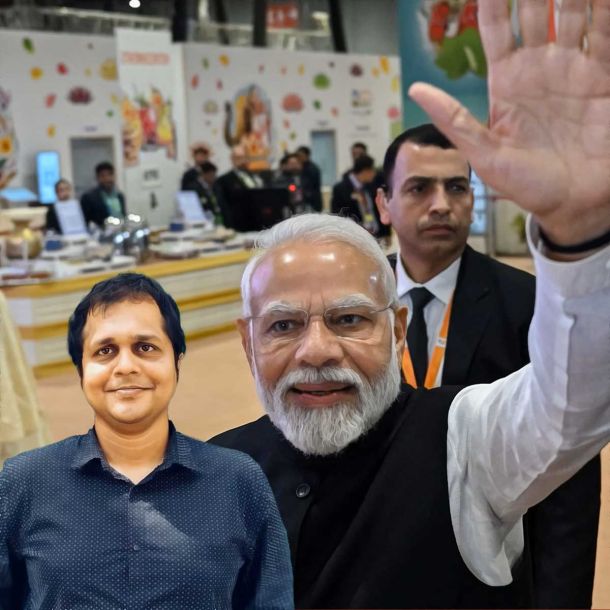More Coverage
Twitter Coverage
JOIN SATYAAGRAH SOCIAL MEDIA
"Tradition on trial": In a backdrop of temple tensions, the Supreme Court agrees to hear pleas on Tamil Nadu's move to appoint 'non-believers' as priests. The state's rich heritage now intersects with faith, politics, and looming threats of vandalism

September 25, 2023 — The Supreme Court put a temporary pause on Monday to the Tamil Nadu government's recent moves concerning the appointment of archakas (priests) in temples steeped in Agamic tradition. This comes amidst rising concerns highlighted in petitions about the state government’s intention to position individuals who don’t traditionally believe or follow the faith as temple priests.
|
In an unfolding legal scenario, the Supreme Court took cognizance of the contention surrounding the Tamil Nadu government's approach to appointing archakas. Reacting to the writ petition brought forth by the association 'Srirangam Koil Miras Kainkaryaparagal Matrum Athanai Sarntha Koilgalin Miraskain-karyaparargalin Nalasangam', Justice AS Bopanna and his bench declared, “in the meantime, the status quo relating to archakaship in Agamic temples in question, shall be continued in the same manner, until further orders.”
The central matter in dispute comes from government orders dating July 27 and August 28, 2023, with subsequent related orders, that allegedly disrupt the traditional, generation-to-generation appointment of archakas in Agama temples. As described in these orders, individuals from different denominations, provided they completed a one-year certificate course for archakas organized by government-run institutions, would be eligible for the role.
Representing the voice of many traditionalists and temple associations, the petitioners have highlighted the importance of continuity in faith and practice. They pointed out that significant temples dedicated to Shaivite and Vaishnavite traditions in Tamil Nadu are rooted deeply in Agamic principles, both in their architecture and their worship. Therefore, any deviation from these established customs, they argue, would be not only untraditional but also a disservice to the sanctity and legacy of these revered institutions.
The debate underscores the broader issues of tradition versus change, and the role of government in religious appointments. As the nation awaits the Supreme Court's final verdict, the outcome will undoubtedly set a precedent for similar matters in the future.
The debate intensifies around the Tamil Nadu government's controversial decision to consider individuals for the position of archakas (priests) based on a one-year certificate course. Petitioners firmly state that this move threatens the state’s temple integrity, alleging it’s a tactic by the government to sabotage these religious institutions.
|
In the most recent update, the petitioners contend that, even in the face of clear directives by the Supreme Court and the Madras High Court, the Tamil Nadu government remains steadfast in its intent to appoint archakas who don't adhere to the faith. The petition underscores, “It is well settled that a secular Government does not have the power to interfere with essential religious practices, as such a right is well protected under the Constitution of India. Agamas undoubtedly pertains to an essential religious practice, which cannot be tampered with by a secular Government.”
In a clarion call to the sanctity of age-old traditions, the petition elaborates on the deeply-rooted training and initiation processes that aspirant priests undergo. Contrary to acquiring skills through short-term courses, aspiring archakas receive rigorous instruction spanning several years from learned gurus, often within their own families. The highlight here is the emphasis on “Deekshai or Samskara (initiation)”, which they receive as early as between the ages of five and seven. This initiation is followed by an intensive Vedic education, culminating in their hands-on experience performing religious rituals before they fully assume the role of archakas.
Supporting the petitioner's stance, Senior Advocate Guru Krishna Kumar invoked past judgments to strengthen their case. He reminded the court of its own rulings in the 1972 Seshammal case and the 2016 Adi Saiva Sivachariyargal Nala Sangam case, both of which emphasized that the appointment of archakas in Agama temples should strictly adhere to Agama traditions.
As the tussle between tradition and governmental intervention continues, the nation watches closely. The outcome of this case will set a crucial benchmark for the delicate balance between state governance and religious autonomy.
|
SC refuses to stay Tamil Nadu government’s decision to appoint Archakas in temples
The perennial conflict concerning the authority and autonomy of temple administrations in Tamil Nadu reaches another fervent pitch. Notably, it’s the appointment of ‘Archakas’ (priests) that sits at the heart of this tension. Tamil Nadu’s government and its decisions, often seen as interventions into religious territory, have led many to question where the line is drawn between governance and religious autonomy.
Adding complexity to the situation, last year the Supreme Court made its stance clear by refusing to stay the Tamil Nadu government’s decision regarding the appointment or dismissal of archakas in temples. This decision was accompanied by the court issuing a notice to the Tamil Nadu government based on a plea by the former Rajya Sabha MP, Subramanian Swamy. Swamy's petition not only questioned the state government’s authority to intervene in the appointment of priests but also challenged the very provisions of the Hindu Religious and Charitable Endowments Act, 1959.
This Act, to many critics, appears to endow the state with disproportionate power over the decision-making processes within temples, including the hiring and firing of priests.
A history of perceived interference sets the backdrop to these recent developments. The Hindu Religious and Charitable Endowments (HR&CE) department of the Tamil Nadu government has faced multiple accusations of encroaching upon temple administrative matters. Eyebrows were raised especially when the department was believed to be instrumental in annexing temple land within the state.
|
A specific incident from June 27 stands out, showcasing the escalating tensions. In a direct face-off between state officials and temple authorities, Velvizhi, an official from the HR&CE department, along with two police personnel, made a controversial entry into Kanagasabai. This act met staunch resistance from Dikshithars and the Bharatiya Janata Party (BJP) supporters. The crux of the contention was an earlier claim that Pothu Dikshitars of Chidambaram Natarajar temple had denied devotees the right to offer prayers from Kanagasabai during the Aani Thirumanjanam festival.
Earlier this year, an explosive revelation came forth as T R Ramesh, an activist, highlighted an alarming financial discrepancy in the famed Samayapuram Mariamman Temple. According to his claims, an astronomical sum of approximately ₹422 crores was found missing from the temple’s funds. Diving deep into the temple’s financial records through an RTI inquiry, Ramesh asserted that the funds appeared consistent up until 2021. However, by the end of 2022, a startling 92% of the temple's financial assets seemed to have vanished.
Swift in their response, the Tamil Nadu government’s HR&CE department, the state body often criticized for its interventionist stance regarding temples, refuted these claims and vouched for the safety of the funds.
This financial fiasco is not a standalone incident. The Supreme Court, in a significant move last year, demanded clarity from the Tamil Nadu government regarding their alleged indirect control of an astounding 38,000 temples in the state. By handpicking executive officials without appointing temple trustees, the administration is said to have indirectly taken the reins of these temples. The repercussions? According to petitions, this strategy has resulted in gross financial mismanagement of some of Tamil Nadu's most revered temple institutions.
Tamil Nadu, the land of myriad temples—many ancient, steeped in history, and cultural relevance—is unfortunately grappling with new-age challenges. The past few years have unveiled a disturbing trend where these hallowed structures are not just financial targets but also face external threats. With rising incidents of attacks and dwindling vigilance, Tamil Nadu's temples seem to be facing a dual onslaught – both from criminals and an ostensibly indifferent bureaucracy.
|
Attacks on Hindu Temples in TN: A Rising Concern
In the heart of Tamil Nadu, the land of age-old temples and cherished traditions, the rising tide of vandalism in sacred spaces has brought a new wave of distress among the faithful. The sanctity and peace that these temples represent are increasingly being violated, often amid questionable official explanations.
The HR & CE department, entrusted with temple management, and the Tamil Nadu police seem to exhibit an unanticipated laxity. A disturbing pattern emerges when, in multiple incidents, the police label attackers as "mentally challenged." This interpretation is met with skepticism, given that only Hindu temples appear to bear the brunt of such assaults.
A recent occurrence on August 7 was particularly harrowing. Bhagwan Murugan and Valli and Devyani's murtis, housed in the revered Dhandayudhapani temple, became the target of a miscreant's rage. The temple, perched atop a hill, witnessed this unsettling act around noon. Alert devotees, upon witnessing the act, managed to apprehend the man, later identified as Boopathy from Siruvayalur. The police, in a seemingly predictable response, diagnosed him as mentally disturbed.
|
|
Another grievous act of desecration took place in 2021. The pristine rock-cut mountain temples located atop Aththri Hills in Alvarkurichi faced the sacrilege of their sacred rocks being defaced. Allegedly perpetrated by Islamists, the rocks were marred with the Islamic "crescent moon" symbol. Adding to the temple's desecration, inscriptions of "Allah", the Islamic symbol, and the number 786, were also discovered.
Not far in time from this incident, June 2021 bore witness to another act of senseless destruction. The Kailasanathar temple in Keezhananchur village, a relic of the Chola-era, was violated. Unknown assailants intruded the sacred grounds to damage the Shivalingam. Further, the idols of revered deities, including Lord Shiva, Ganesha, Parvathi, and Nandi, were not spared in this brazen act of sacrilege.
Such attacks underscore the vulnerability of Tamil Nadu's spiritual heritage. The damage to these temples goes beyond the physical – it rends the cultural and spiritual fabric of a society that has cherished and revered these symbols for generations. The pressing question now is how the authorities intend to rise to their duty and protect this invaluable legacy from further harm.
 Support Us
Support Us
Satyagraha was born from the heart of our land, with an undying aim to unveil the true essence of Bharat. It seeks to illuminate the hidden tales of our valiant freedom fighters and the rich chronicles that haven't yet sung their complete melody in the mainstream.
While platforms like NDTV and 'The Wire' effortlessly garner funds under the banner of safeguarding democracy, we at Satyagraha walk a different path. Our strength and resonance come from you. In this journey to weave a stronger Bharat, every little contribution amplifies our voice. Let's come together, contribute as you can, and champion the true spirit of our nation.
 |  |  |
| ICICI Bank of Satyaagrah | Razorpay Bank of Satyaagrah | PayPal Bank of Satyaagrah - For International Payments |
If all above doesn't work, then try the LINK below:
Please share the article on other platforms
DISCLAIMER: The author is solely responsible for the views expressed in this article. The author carries the responsibility for citing and/or licensing of images utilized within the text. The website also frequently uses non-commercial images for representational purposes only in line with the article. We are not responsible for the authenticity of such images. If some images have a copyright issue, we request the person/entity to contact us at This email address is being protected from spambots. You need JavaScript enabled to view it. and we will take the necessary actions to resolve the issue.
Related Articles
- "Do we have Supreme Court": I.N.D.I Alliance leader A Raja goes on anti-Hindu rant, "India is not a nation. I am an enemy of Ram. One Kuravar brother, one Hunter brother, one monkey brother, another monkey 6th brother, then your Jai Sri Ram. Chi! Idiots"
- "Erase a word, influence a generation": Amid political tumult, Tamil Nadu's DMK sparks debate with intent to remove Sanathana Dharma from textbooks, showcasing the party's long history of leveraging education to spread its Dravidian ideology
- “Dereliction Of Duty”: Madras High Court Judge criticizes police inaction against DMK Ministers participation in ‘Eradicate Sanatana Dharma’ Conference, while Udhayanidhi Stalin after High Court's criticism maintains that he will oppose Sanatana forever
- “If Nagaland people who eat dog meat have so much self-respect”: I.N.D.I. Ally DMK Leader makes racist comments against Nagaland people, reflecting a startling lapse in political humility, Tamil Nadu Guv hits back, Annamalai demands him to be arrested
- Ruling DMK party in Tamil Nadu courted controversy as official spokesperson Rajiv Gandhi calls for genocide of Tamil Brahmins, wants to adopt Dravidian icon Periyar’s killing model
- Temple land in Thiruvannamalai, once a sanctum of spirituality, now besieged by the rise of an ugly shopping complex, devotees decry the greed of @tnhrcedept officials, as heritage is bartered for commerce, endangering the venerable East Gopuram
- "Hatred is the coward's revenge for being intimidated": Descendants Of Vijayanagara Empire who reconstructed Chidambaram Natarajar Temple condemn TN Govt, “Give up politics of hatred against Deekshitars who are hereditary owners of the temple"
- "चल उड़ जा रे पंछी": 81-year-old astrologer and his brother arrested in Tamil Nadu for predicting PMK victory; faced with a ₹10,000 penalty and all their parakeets freed, the astrologers confront the loss of their sole livelihood in this political saga
- "Justice for sale, affordability varies": In an escalating controversy, Udhayanidhi Stalin's fierce criticisms of Sanatana Dharma lead to public uproar & legal petitions, Supreme Court denies expedited hearing, ‘Won’t allow it, follow standard procedures’
- DMK banned 500-year-old ritual of ‘Pattina Pravesam’ at Dharmapuram mutt in Tamil Nadu: Madhurai Adheenam claims threat to life after he accused MK Stalin-led govt of encroaching rights of Hindu temples






















